How to make kitchen tables with your own hands?
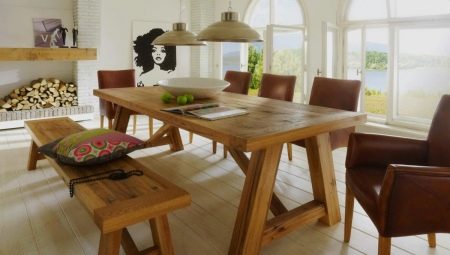
A do-it-yourself kitchen table is one of the most popular creations of a home craftsman. Of course, you can purchase a finished product by choosing from an extensive assortment list of similar products. However, a self-made construction will not only save you from additional costs, but also allow you to make the best use of a small kitchen area. With your own hands, you can make both a rather uncomplicated table and an extraordinary modern design. Everything depends on the skills and the presence of certain experience.
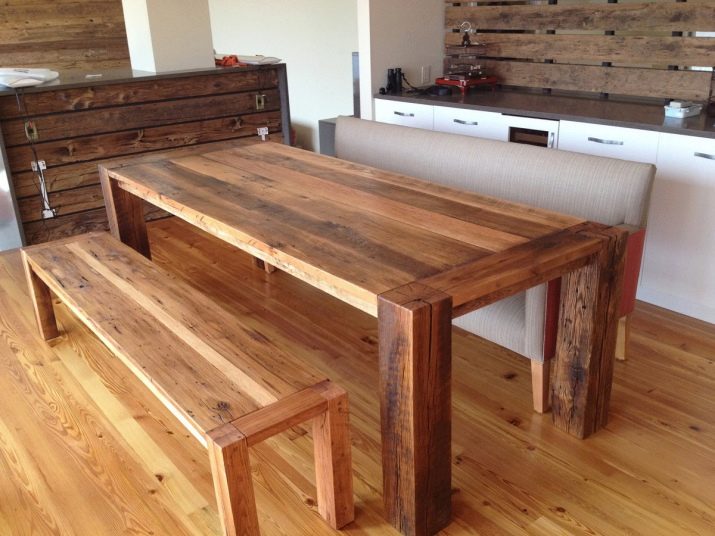
Features of homemade tables
Furniture showrooms offer today's consumers an extensive selection of tables.
However, not all manufacturers have the opportunity to boast of their excellent quality and affordable cost.
In addition, it is not easy to choose ready-made pieces of furniture for the existing dimensions of the home. Nevertheless, there is invariably the opportunity to make a table with your own hands. Such furniture has its own characteristics.
- Hand-made products are always something exceptional and unique; it will not work to make completely similar items. You can prepare a unique table design in any design style on your own.
- Quality and controllability. Good and high-quality materials are selected for the manufacture of homemade products. All details are repeatedly checked, since this is a one-off work in a certain sense.
- Taking into account the characteristics of the room will allow you to calculate the exact parameters of the future table. Due to this, the table will perfectly fit into the room and will become much more functional than an industrial original.
- The cost of a do-it-yourself table will be cheaper than a store prototype.
And further, to save money on buying a new table in the kitchen, it is enough to simply update the old one.
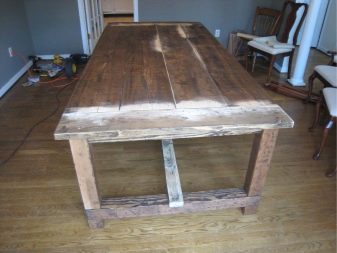
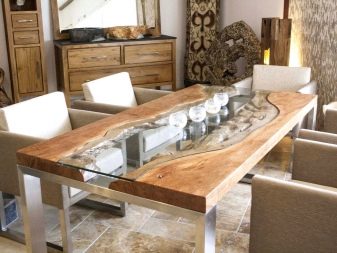
Varieties of designs
This may seem unusual, but such an ordinary product as a kitchen table can have several ways of implementation. They differ in design properties, which have determined 5 variants of the table for the kitchen.
- Typical table with four legs... This is the most common structure with a round, oval or rectangular configuration, which is quite easy to create. The main thing is to take into account the individual technological details associated with the subtleties of the design.
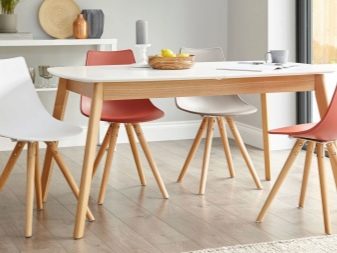

- A folding transforming table requires special tools and a mechanism that determines this design.... The most common and simplest option is a kitchen table-book, which can be made from chipboard.
You can also use wood, you just need to saw the array on special equipment or order already prepared material.
And then all that remains is to assemble the folding table.
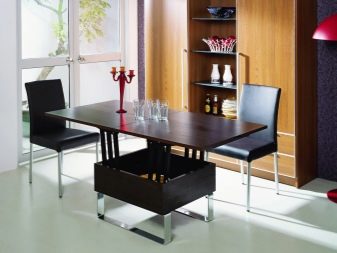
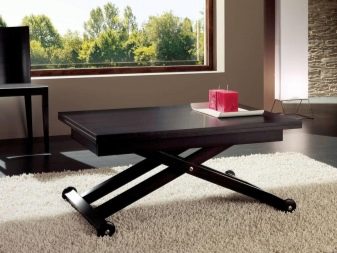
- Sliding design. The point is to install an additional insert, through which the area of the working surface increases. The usual mechanism pushes 2 halves of the table, and inside there is an additional section.
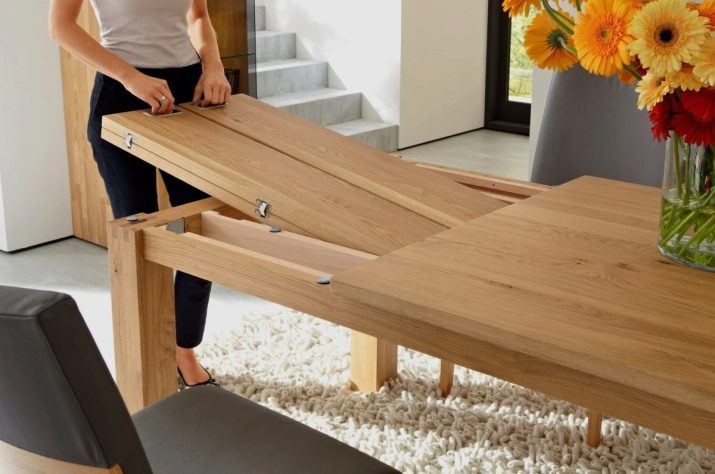
- Pull-out table... Significantly frees up space for the furniture you need most. It usually performs several options:
- functions as an auxiliary table top, on which it is comfortable to cut food, or place electrical appliances (mixer, harvester);
- small table for coffee gatherings or tea drinking uses a little space, in comparison with the main dining surface, by pulling out this structure, you can eat quite comfortably.
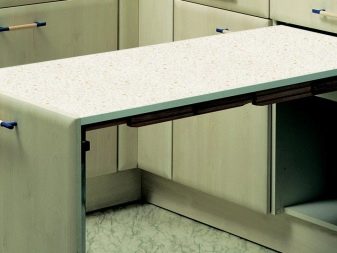
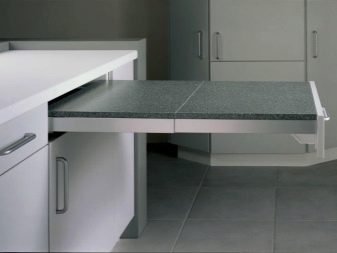
- Dining table with hinged lid likewise, it is considered a fairly common design that does not require special skills for manufacturing.
In essence, it is a table top with fold-out legs attached to a vertical plane.
Based on the above, we conclude that absolutely any design is suitable for manufacturing on our own.
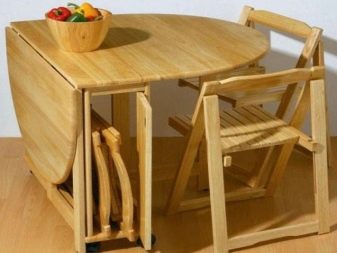

What to make of?
The wood table goes well with the rest of the materials in the interior.
Quality, environmental friendliness and long service life make wood tables one of the most demanded.
Such products are used both at home and in various offices. Tables, as a rule, are made from massifs of such rocks.
- Medium hardness (birch, pine, linden, alder, cedar, spruce). They can be processed without problems, they look beautiful, they are strong and are relatively inexpensive.
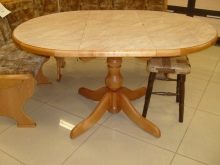
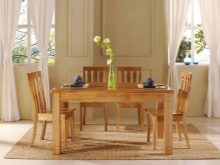
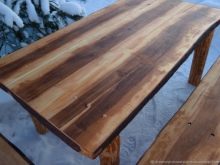
- Solid (ash, beech, cherry, cherry, oak, acacia, elm, larch), they are quite strong, durable, look great, only their price is higher than that of soft varieties.

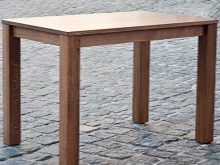

- Exotic (amaranth, suar, mahogany, eucalyptus, teak and others). They are resistant to moisture, dryness and mechanical stress, and stand out for their original look.
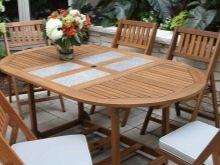
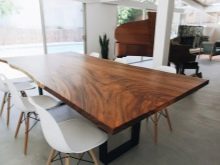
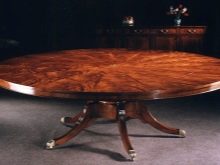
To create tables, use extremely dried material. The choice of the breed depends on the purpose for which and in what place you will be using the furniture.
A kitchen table, for example, needs to be resistant to moisture and scratches, so it is best to use hard grades here.
In addition to the species listed above, tables are made from the following wood materials.
- Chipboard (chipboard), made by pressing crushed wood blocks (deciduous and coniferous), bonded with resins. They can include 1, 3 or 5 layers and be of different density. They are effortlessly processed, they are quite durable, have good insulating properties and are low cost. Mostly suitable for office desks.Should not be used for children's furniture due to the presence of toxic formaldehyde in the structure.
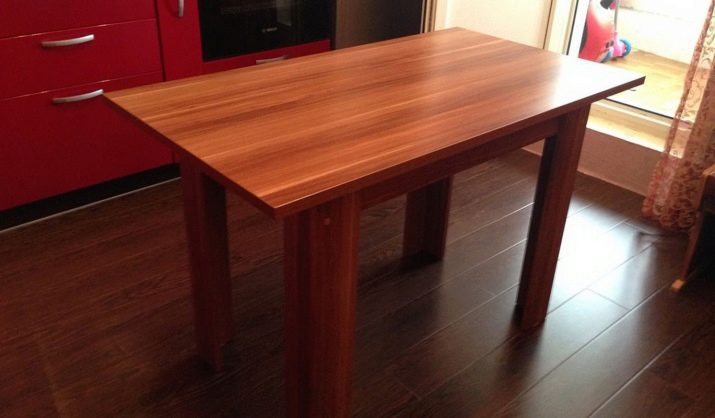
- Similar slabscoated with a polymer film are called chipboard. They can be used for kitchen, office tables.
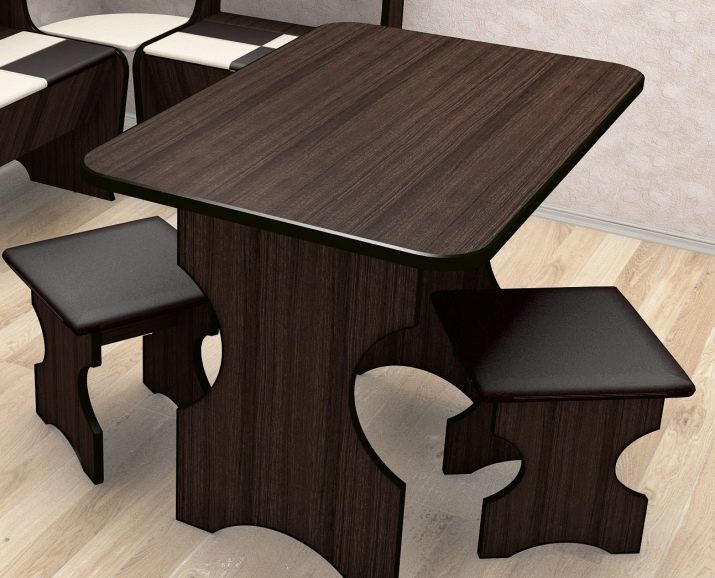
- MDF - fibreboards made from dry and glued sawdust. They are compact, perfectly retain their configuration and fasteners with their small thickness from 5 to 22 millimeters. The structure of the boards is characterized by homogeneity and smoothness, and is free to process.

- If MDF and chipboard accurately reproduce wood, chipboard is able to stylize other surfaces.
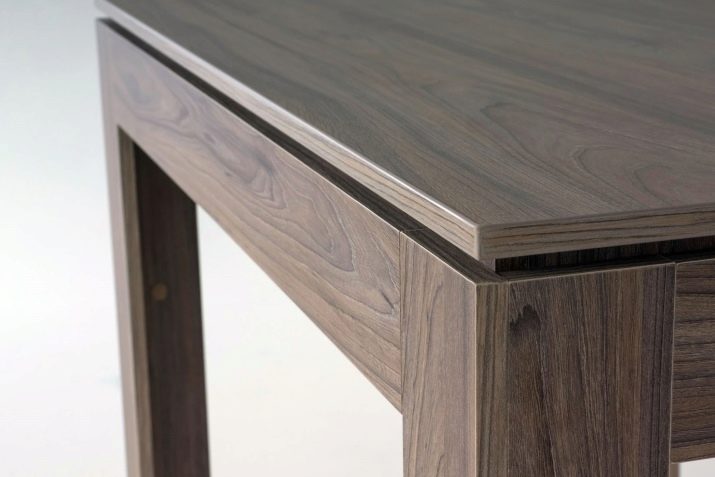
- A good material for making a table is plywood. It is a multi-layer panel made of glued veneer. It is produced mainly from thin sheets of birch, poplar or conifers. It is characterized by water resistance.
It can be polished or unpolished. To create a table, it is advisable to take laminated plywood.
It is perfect for a desk or the most trivial solutions for a country house.
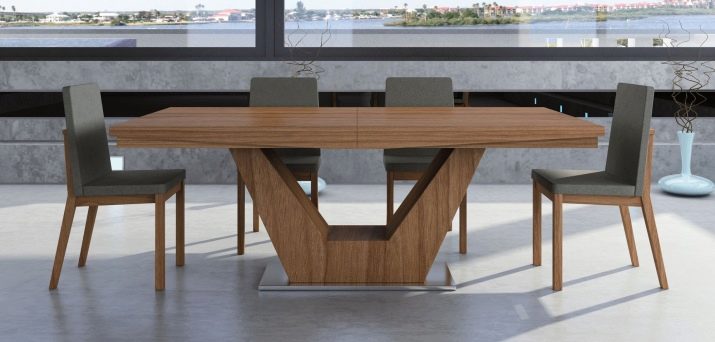
- Another option for furniture for a country house is a table made of tree trunks cleared of branches, otherwise logs... For the manufacture of such a table, round timber of coniferous trees is ideal.
It has various diameters: small from 6 to 13 centimeters, medium - 14-24 centimeters, large starts from 25 centimeters.
Chopped furniture can be placed in the garden, dressing room, gazebo or in the yard. Sometimes stylized chopped tables can be seen in restaurants and summer cafes. Some people equip the children's room with chopped furniture made of thin round timber, since this is a completely environmentally friendly material.
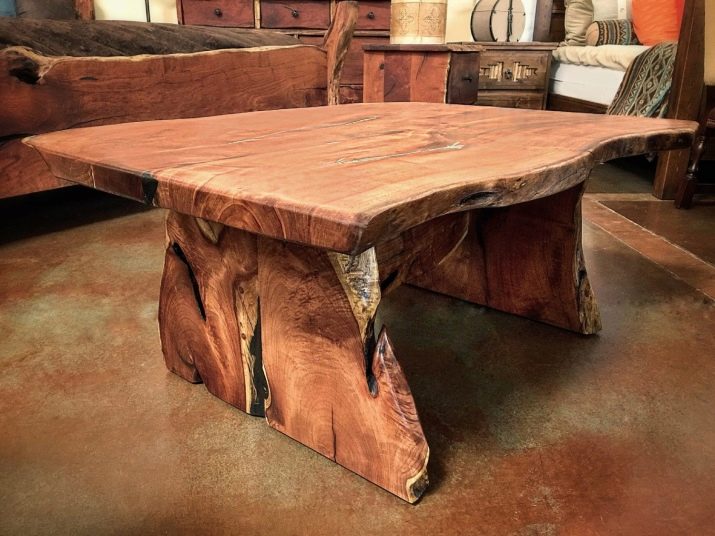
- Wooden pallet table - simple and very curious solution in the design of the home. Pallets, in other words, are pallets. A few pieces are enough for a small table. You can assemble them like a constructor and connect to each other. An excellent choice both for a coffee table in the living room or as a kind of bedside attribute in a bedroom.

- Original and durable tables can be made from timber. It is durable and will take any stress. Any wood will do for making. To fix the elements, you can use specialized glue and self-tapping screws.
The table top can be made from timber or boards.
Such a sample will be an excellent solution as a dining table.
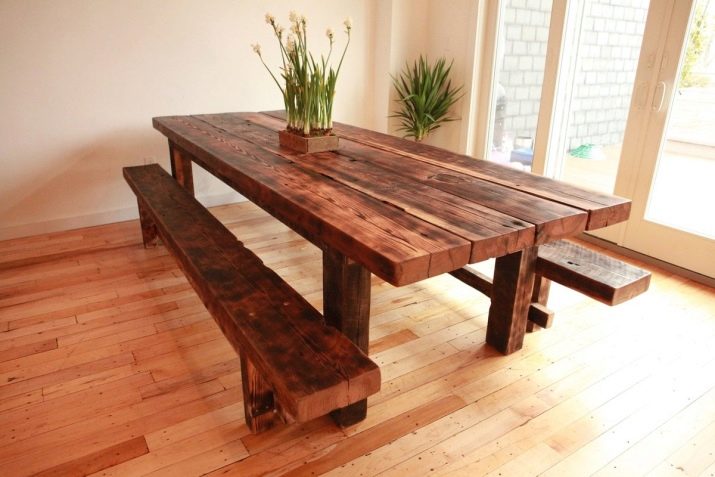
- An unpretentious, fashionable and affordable table will come out of a furniture board. It can be applied in any room. A furniture board is a solid sheet or a sheet glued from planed bars with a width of no more than 600 millimeters.
It is safe, aesthetic, pleasant in texture and color. It can be painted or varnished.
Domestic manufacturers make the lion's share of shields from beech, oak, birch, conifers. In essence, the shield is a ready-made tabletop. You just need to cut it to a suitable length and equip it with legs.
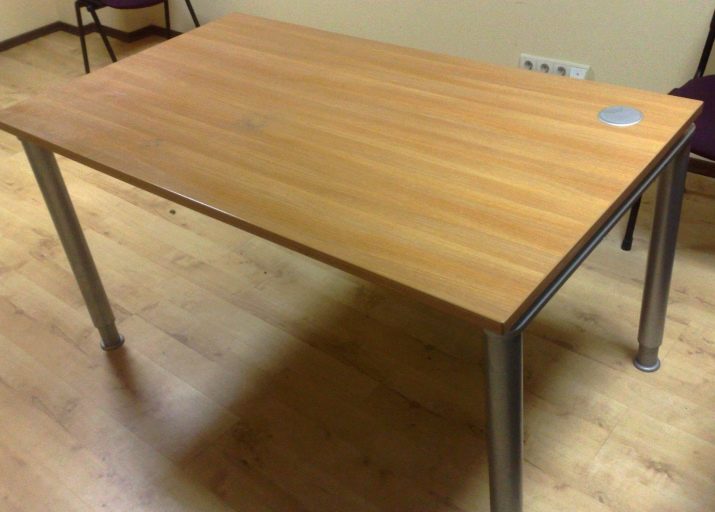
- It makes sense to consider a sample of a homemade wood table decorated with tiles... The basis of the product can be anything, but the table top must be decorated with ceramic tiles. To do this, you can use any mosaic elements or tiles. We just glue the tiles onto the lid. It is better to take large tiles, so there will be less joining seams and less work.
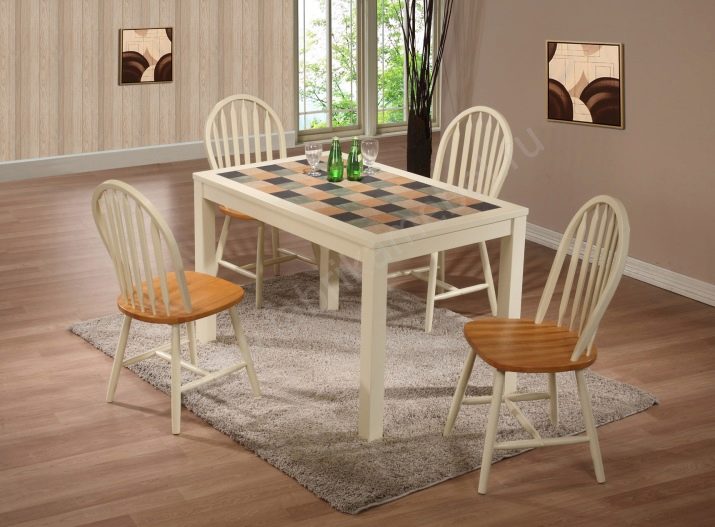
- Wooden slab table. This is what used to be called exclusively monolithic slabs of stone rocks. Today this term is applied to transverse and longitudinal cuts of a solid mass. Each slice has a specific pattern and shape. It is used to create bedside tables, dining tables, bar tables, and coffee tables. It can be successfully combined with glass.

- Drywall. For the kitchen, you can make a rack, a bar counter, a table and a whole kitchen set from it.
Since the kitchen is a room with a high degree of humidity, you should use GKLVO or GKLV.
The abundance of finishing methods makes it possible to focus on the design, highlighting its originality, or to make it invisible by decorating the surface in a single color palette with the design of the room.

There are a lot of materials with which you can create original things with your own hands. Some artisans build furniture even from ordinary PVC bottles.
Such unusual, but at the same time attractive products include a table called "glass river".
The table acquired this name thanks to a glass insert or epoxy resin pouring in the middle of the table slab. Visually, the table looks like a mountain gorge, in the hollow of which a river flows. The effect is very beautiful.
Required tools
Along with the material of the structural elements of the table and the facing materials to give it a perfect appearance satisfying the requirements, in the process of work, you will need the following.
- Furniture corners for pairing elements.
- Euro screws (furniture tightening screws). If it is supposed to work with thick layers of wood, you will also need elongated ones. Together with them, it is advisable to immediately purchase a specialized cone-step drill and decorative plugs.
- Self-tapping screws for wood.
- Marking pencil, tape measure, level, sandpaper.
- An electric jigsaw and a circular face saw (it is handy to use it to cut elements at the required angle).
- Planer (if work with wood mass is planned).
- Screwdriver (it can also be used as an electric drill).
- Angle grinder.
- Electric drill.
- Building hair dryer or iron.
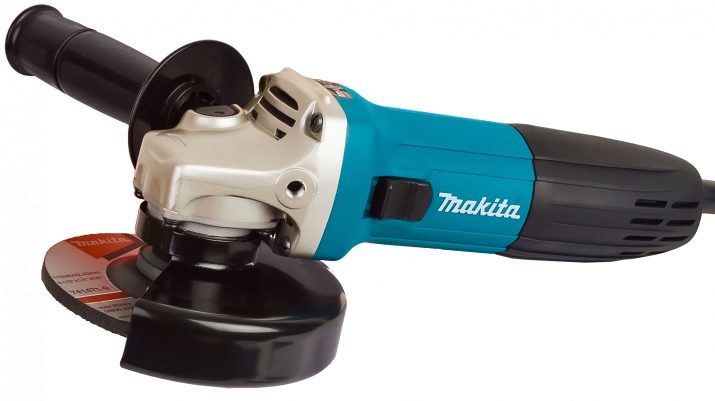
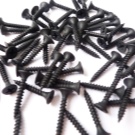
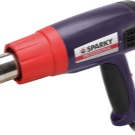

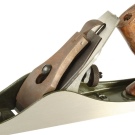
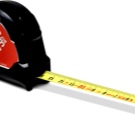
How to make?
We will analyze how to make a table for the kitchen with our own hands using the example of an ordinary dining table. First of all, we will prepare the tools and materials that are listed above and will be required for work. After that, we carry out the marking of the furniture parts. We start with the table top as this is the largest piece of the product. By configuration, it can be: square, oval, round or rectangular. If you started to build a table of an unusual configuration, carry out the markup according to diagrams, sketches.
Next, we apply a drawing of the side supports to the source material - these will be the legs of the table being created.
As a rule, according to their configuration, they reproduce a chess piece. If you wish, you can make a different configuration at your discretion. The main condition is for the structure to be stable.
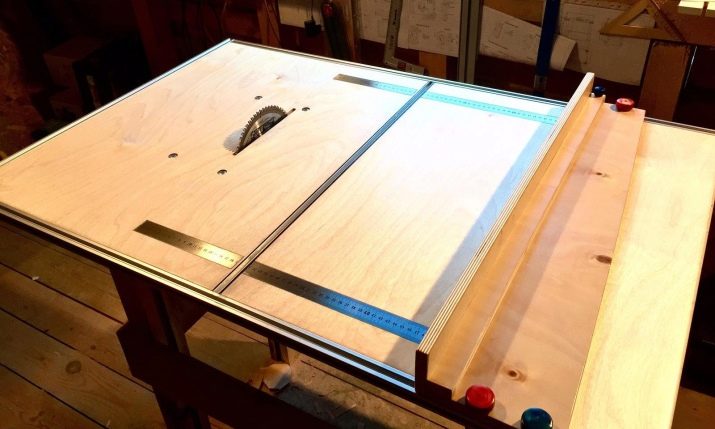
Then we mark the lower and upper cross members, which will connect the racks and similarly give the structure reliability.
Remember that the lower crosspiece is invariably wider than the upper one by almost 2 times. Its configuration is diverse. Basically, the legs are placed from the edge of the table surface at a distance of 15-20 centimeters.
At the next stage, we carry out the cutting of parts. We put the material on the table. We cut out the cover using a jigsaw. In order to prevent the occurrence of chips, it is necessary to put plywood under the bottom. Cut out the rest of the elements in the same way. Don't let the material sag. As a result, the toolkit may break, or the cut out part may break off. After the parts are cut out, we process their edges with an angle grinder or go over them with sandpaper.

Using an edging tape and a plastic profile, we carry out trimming. First of all, we put the profile on the edge of the surface.
In places of corner bends, the profile must be heated with a hairdryer or iron and then bend it. For a more secure hold, use a multi-purpose adhesive.
After that, we trim the crossbars and legs using an edging tape. Let's first prepare the surface by cleaning it from dust, grease and dirt. With a heated iron, we press the tape to the edge, thereby gluing it. Cut off all unnecessary with a sharpened knife.Carefully remove the appeared roughness with emery paper. We process the edges of the remaining parts in the same way.
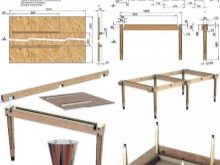
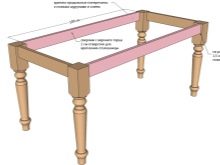
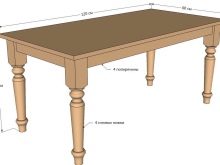
We carry out assembly work in the following sequence. Using euro screws, we connect the legs with the crossbars, placing the upper one in such a way as to prevent the table top from bending. We fix the bottom at the level of 20-25 centimeters from the floor... We place the tabletop on the finished supporting structure, fix it with the help of corners. We fix the pads on the racks. We close the furniture screws with caps. The assembly is complete.
How to make a kitchen table with your own hands, see below.








